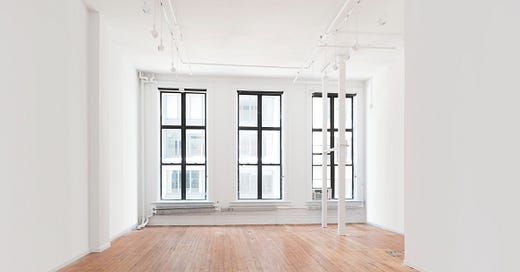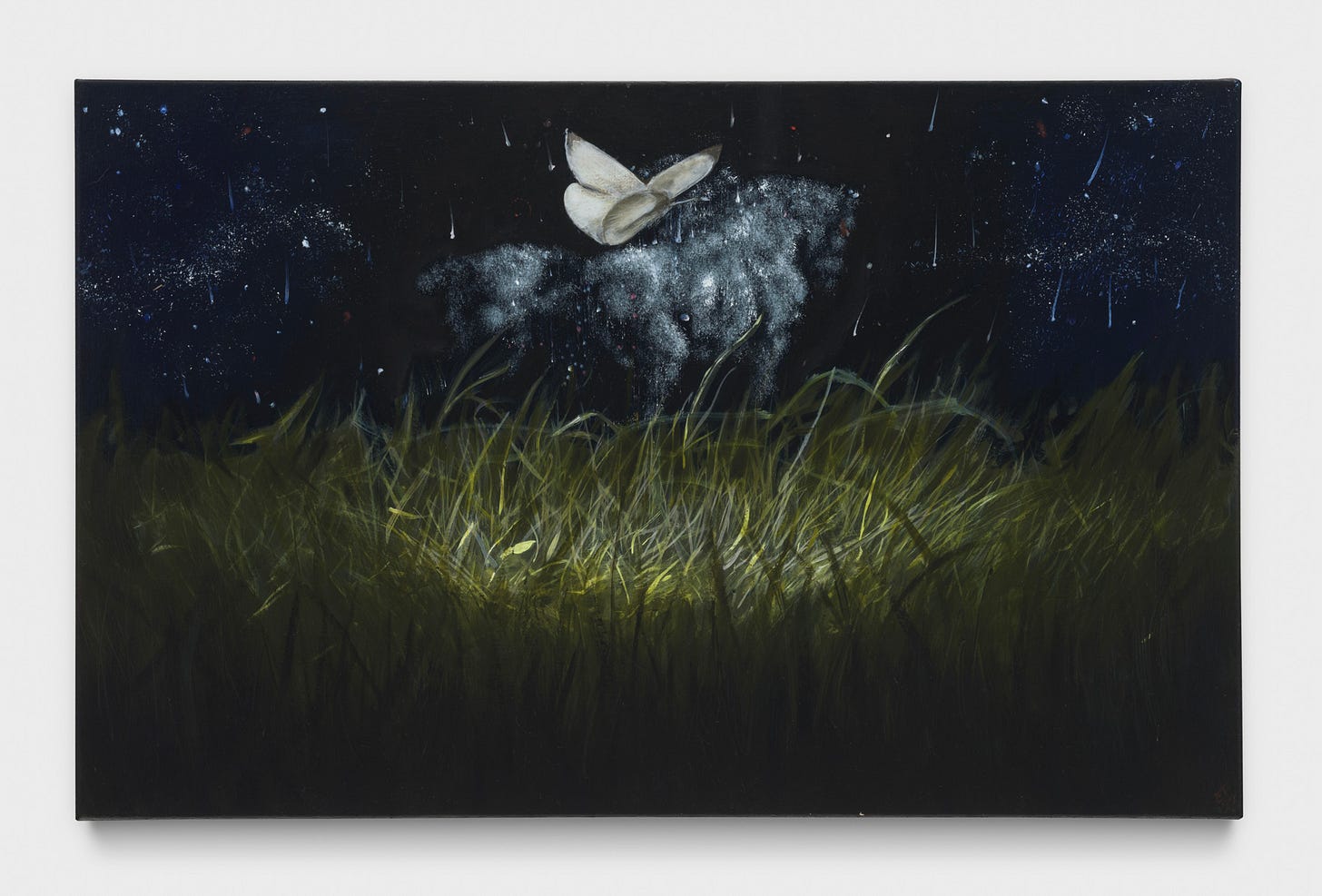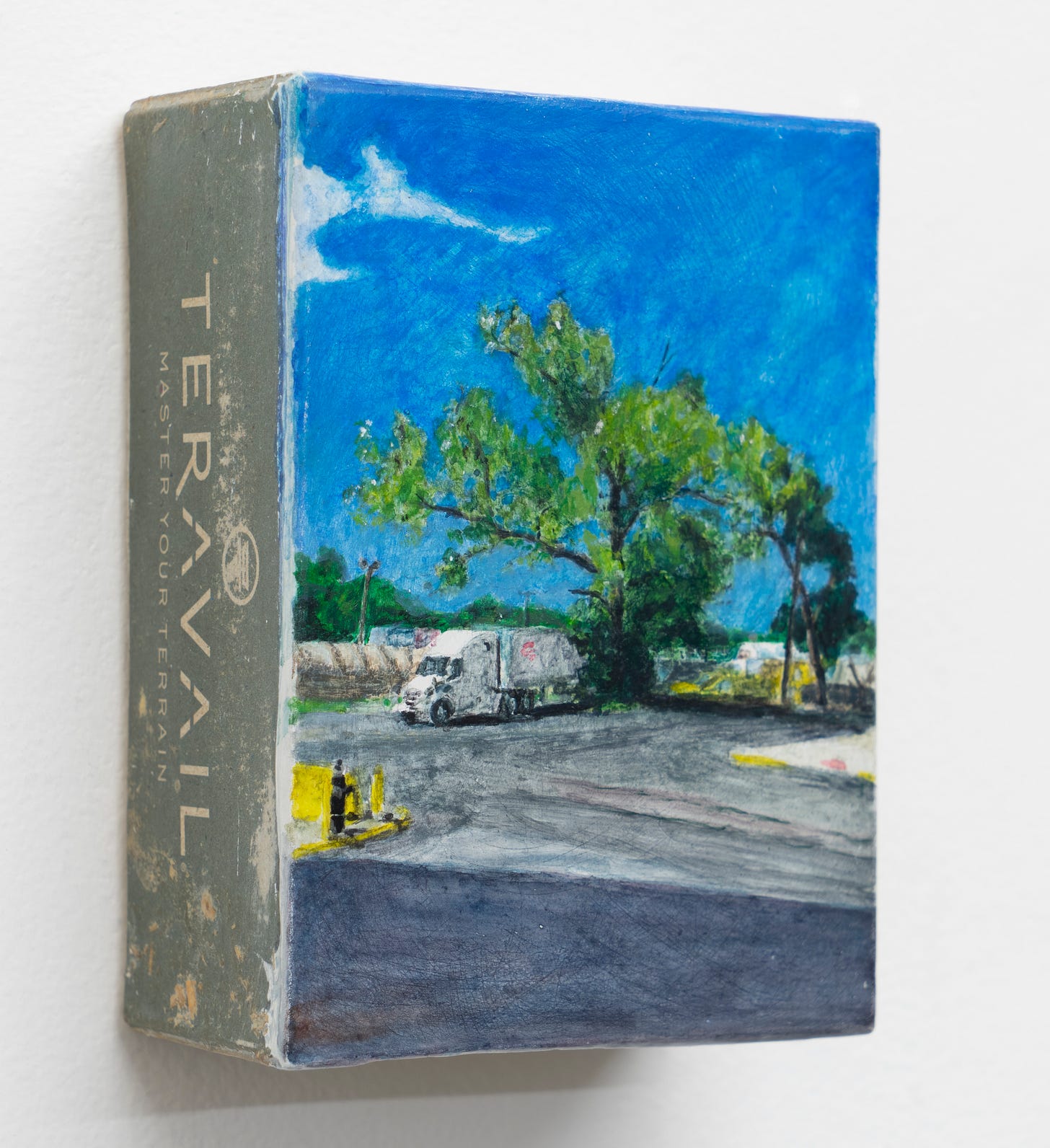A rotating gallery model in NYC
An interview with Rebekah Chozick of Chozick Family Art Gallery
I’ve heard it takes three years to make a profit as an art gallery. Three years is a long time to go without consistently being in the black, especially for a business with many costs, including high rent, shipping, and travel to art fairs.
In Tribeca, three galleries are joining together in a collaborative model—a first for the neighbourhood. Chozick Family Gallery, JDJ and Deanna Evans Projects will alternate monthly programming on the second floor of 370 Broadway in Lower Manhattan (previously home to just JDJ).
I’ve always thought that the pressure to mount a new exhibition each month for an art gallery be a bit excessive, so I am a fan that this model gives gallerists the space to mount thoughtful programming and cut costs, therefore being able to take more creative risks.
I’m familiar with JDJ and Deanna Evans Projects programming, but Chozick Family Art Gallery was a new name to me. It’s being opened by Rebekah Chozick, who has 7+ years working as a sales director at Rachel Uffner and an additional five at Pace and Lehmann Maupin. The gallery's initial roster features Sofía del Mar Collins, Sara Jimenez, Raphael Griswold, KB Jones, Gitte Maria Möller, Elbert Joseph Perez, Christopher Paz-Rivera, Andrea McGinty and Avery Z Nelson.
Over the holidays, Chozick answered a few questions about the collaborative model and her plans for the gallery, which you can read below. Chozick Family’s debut exhibition in March, titled FAMILY / TREE, will feature artists from the program alongside other emerging and established artists who have inspired Chozick throughout her career. Throughout the interview, I’ve included work from artists that Chozick Family Gallery will be representing.
Art Forecast: Can you speak on the name of your gallery, Chozick Family Art Gallery? I'm especially interested in the use of "family" within the title—will this be a family project?
Rebekah Chozick: Yes and no. My biological family is not officially involved, although I do have to acknowledge their support, help with childcare, and other very real tangibles that make this possible.
I used this name for a few different reasons. First, I wanted the name to echo the nurturing and supportive ethos that I will foster at the gallery. After being in the business for almost 15 years, working in a range of galleries at different scales, sometimes I think the human aspect of our business can be overlooked. The word "family" is a reminder to me that trust and care, with artists, colleagues, collectors, etc., are very important aspects of what we do.
Another reason is that when I thought about using my full name "Rebekah Chozick" or even just "Chozick Gallery," it felt too omnipotent for what I'm doing. An important part of my success has and will always be my community. I'm so lucky to be surrounded by so much talent, beyond the artists, and friends and colleagues have always stepped up to help me out as I do in return. The word "family" felt like a reflection of this to me, a small gesture to make others feel included.
I love the idea of a collaborative gallery space. Can you speak a bit more about how the arrangement came about and how it will work?
Thank you! Jayne Johnson (Owner/Founder of JDJ) and I had worked together in the past and share a lot of ideologies and thoughts on how to operate within the art world. She approached me about sharing her space, which is centrally located in Tribeca, and from there we came up with this model that we feel addresses the demands of running a physical exhibition space while balancing the increasing demands of the global art market. We are also sharing the space with Deanna Evans Projects and will be alternating monthly programming between the three galleries. For example, Chozick Family Art Gallery will present exhibitions in the months of March, June, September, and December in the year of 2025. In addition to the gallery space, the location has an office and viewing room and we will all maintain a presence there year round, so our artists and clients will always know where to find us.
There are some obvious benefits to this arrangement with the financials, as well as the ability to meet new contacts through each others' circles. For me one of the biggest advantages of working in the same space is the possibility to bounce ideas off each other and offer feedback. We can all benefit from feedback based on our individual experiences.
We hope to work on some exhibitions and maybe even art fair booths together in the future.
There has been a lot of recent talk about the slowness of the current art market; what are your thoughts on that as someone opening up a gallery?
Great question. Having worked in the business for the last almost 15 years I have experienced waves of the market. Johnson, Evans, and I are certainly thinking about this past year as we embark on this new business model, and adapting to the moment. I do think pace will pick up again in the coming year although perhaps not to the level of two, three, four years ago.
Will you represent artists? What is your programming ethos?
Yes, I am representing artists. I have nine on the roster to start, each are artists that I have worked with in some capacity in the past and have a deep connection to the work. There are so many different gallery models out there today but the idea of representation has always been important to me. As a gallerist, representation demonstrates that my full weight and support is behind their practices and I am committed to building their careers in the long term, not just project to project.
However traditional that may sound, I don't believe that representation needs to be a monogamous relationship and I strongly believe in collaborating with other galleries on supporting an artist and bringing new opportunity. I look forward to helping my artists create new relationships, especially in other cities, to help with visibility and our shared goals.
I'm excited to be working with a range of artists from different backgrounds with varied processes. There is a strong interest in mixed-media throughout the program as well as deep explorations of image making. Many of the artists are teachers or curators and embody the gallery's ethos of collaboration in their own practices.
What will you be working on during the months you don't have an exhibition up?
I'm excited to have more time to really work on each exhibition in advance, promoting the show and drawing early interest. That's something that's hard to do when you are balancing 6+ shows a year. I will be at the gallery in the months I'm not using the exhibition space, working in the office and doing viewings by appointment. This is important to me, so that my community, artists, collectors, always have a place to find me.
I will also be participating in art fairs throughout the year, and this arrangement actually will allow me to do much more in my first year than if I had a space to program for all 12 months. Additionally, I've agreed to curate some exhibitions at friends' galleries, and I will be looking for other creative opportunities for my artists, including site-specific projects, publications, hosting studio visits, etc. I will be very busy and engaged with the gallery at all times.









Reading about the collaborative gallery model reminds me of artist run galleries where again a few or more people take on the project ie care the expenses and responsibilities. As artists look for show avenues and representation options so must gallerists and art dealers. Good to read this current activity, thank you!
this model makes so much sense!